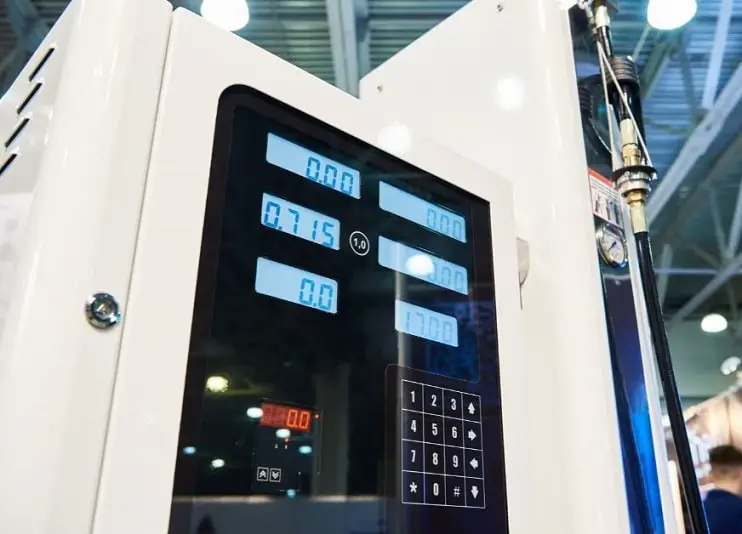Don't Get Confused: Biogas vs. Biomethane Explained
Bioenergy is a renewable energy source that is produced by the decomposition of organic matter. There are many different types of bioenergy, but two of the most common are biogas and biomethane.
So, what's the difference between biogas and biomethane?
Biogas is produced as a result of the decomposition of organic matter in an oxygen-free environment. It is mainly composed of methane, carbon dioxide, and water vapor. Since it is not pure methane, biogas isn't optimal for use as a fuel.
On the other hand, biomethane is produced by optimizing biogas to remove impurities like carbon dioxide, water vapor, and other trace gases. This results in a pure methane product that can be used as a high-efficiency fuel source.
Biomethane is often preferred as a natural gas replacement because it has a lower carbon footprint and has no geographical limitations.
Moreover, it can be used in applications where natural gas is currently used without the need for further modifications.
In this post, we will take a more in-depth look at biogas vs. biomethane and explore the differences between the two gases. We'll also look at some of the uses as well as the benefits and drawbacks of each.
So, without further ado, let's get started!
What is Biogas?
Biogas is a renewable fuel that is generated by the anaerobic digestion of organic feedstocks such as municipal waste, farm waste, food waste, and energy crops.
Raw biogas is typically composed of methane (50–75%), carbon dioxide (25–50%), and trace amounts of nitrogen (2–8%).
Depending on the feedstock, trace quantities of hydrogen sulfide, ammonia, hydrogen, and different volatile organic compounds are also present in biogas.

It is a well-known fact that methane is one of the most potent greenhouse gases. It is estimated that methane (CH4) has a GWP of 27-30 over the course of a century.
Therefore, free-flowing biogas without any form of treatment can have a significant impact on climate change.
Even if we don't utilize the technologies that allow us to benefit from biogas, it is still produced and emitted into the atmosphere. For example, landfills are a significant source of methane emissions.
By using biogas, we can not only reduce our reliance on fossil fuels but also help mitigate climate change.
When biogas is burned as fuel, methane is turned into carbon dioxide and water vapor. While combustion still results in CO2 emissions, plants use excess CO2 in photosynthesis and help to offset these emissions.
What is Biomethane?
Biomethane is processed by upgrading biogas to remove impurities such as carbon dioxide, water vapor, and other trace gases. The result is a product that is composed of >95% methane.
During the upgrading process, the biogas passes through a series of absorption and desorption steps.
The first step is to remove carbon dioxide from the biogas using an absorption process. This can be done with either amine-based or pressure-swing absorption systems.
The next step is to remove water vapor from the biogas using a desiccant system. The final step is to remove any remaining trace contaminants using a gas purification system.
After the biogas has been upgraded to biomethane, it can be used as a fuel in a variety of applications. For example, it can be used in natural gas vehicles (NGVs) with little or no modifications.
It can also be used in other applications that currently use natural gas such as power generation, space heating, and water heating.
Biomethane offers a number of benefits over biogas. First, it is a pure methane product that can be used as a high-efficiency fuel source.
Since it is composed of almost entirely methane, it has a very high combustion efficiency.

Second, biomethane can be used in applications where biogas cannot. Certain combustive engines are very sensitive to impurities in the fuel and oxidative damage.
For these engines, biogas must be further processed to remove impurities and water vapor. However, can be used for these applications without further processing.
However, there are also some drawbacks to biomethane. First, the upgrading process is expensive and requires a great deal of energy. The process requires significant capital investment and typically has a payback period of many years.
Biogas can be used with little or no processing, making it a more cost-effective option for applications that don't require a very pure combustion process.
Comparison of Biogas and Biomethane Energy Sources
| Property | Biogas | Biomethane |
|---|---|---|
| Definition | Mixture of gases produced by anaerobic digestion | Upgraded biogas that meets natural gas standards |
| Main Components | Methane, carbon dioxide, and traces of other gases | Methane (90% or more) and carbon dioxide |
| Energy Content | 15-30 MJ/m³ | 35-55 MJ/m³ |
| Heating Value | 6-7 kWh/m³ | 10-15 kWh/m³ |
| Odor | Strong | Odorless |
| Corrosiveness | Corrosive to pipes and equipment | Non-corrosive |
| Transportability | Requires compression and specialized equipment | Can be transported through natural gas pipelines |
| Applications | Heat and electricity generation, cooking, etc. | Injection into natural gas grid, CNG vehicles |
| Environmental Impacts | Reduces greenhouse gas emissions, can improve waste management | Can reduce greenhouse gas emissions in transport and heating sectors, but may have environmental impacts related to feedstock production and land use |
What are the example uses of Biogas and Biomethane?
The most common use for biogas is electricity generation. In this process, the biogas is combusted in a gas engine to generate electricity. The exhaust from the engine is used to heat water, which produces steam.
This steam is then used to power a turbine, which generates additional electricity. The waste heat from the gas engine and the turbine can also be used to heat water or space.
Another common use for biogas is space heating. In this application, the biogas is combusted in a boiler to produce heat. The heat can be used to heat water or space directly.
Biomethane can also be used for electricity generation and space heating. However, as a superior fuel source, it can also be used in a variety of other applications.
For example, biomethane can be used as a fuel for natural gas vehicles. It can also be injected into the natural gas grid for distribution and use in homes and businesses.
Biomethane can also be used in combined heat and power (CHP) plants. In a CHP plant, the biomethane is used to generate electricity and the waste heat is used to provide space heating or hot water.


